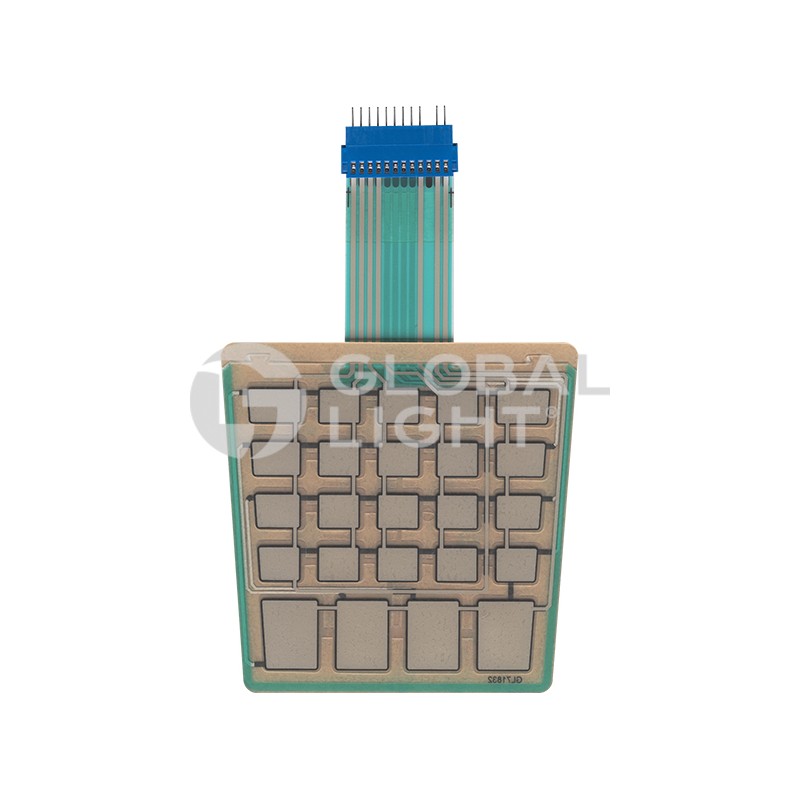Choosing the Right Membrane Switch for Your Business Needs
Choosing the Right Membrane Switch for Your Business Needs
Blog Article
Understanding Membrane Switches Over: The Secret to Trustworthy and long lasting Controls

What Are Membrane Switches?
Membrane layer switches are an innovative solution in the realm of individual interface innovation, combining capability and style flawlessly. These devices act as an interface in between users and digital systems, integrating a number of parts into a portable style. Normally constructed from flexible, slim layers of products, membrane switches are made to react to touch, enabling users to interact with machinery and electronic gadgets efficiently.
The main elements of a membrane layer switch consist of a printed circuit layer, graphic overlay, and a spacer layer that avoids unintended activation. The visuals overlay can be tailored to show brand identification or customer preferences, improving visual appeals while making certain usability. Membrane switches are frequently made use of in numerous applications, including clinical gadgets, customer electronics, and commercial equipment, owing to their resilience and resistance to environmental factors such as wetness and dirt.
Among the crucial benefits of membrane switches is their capability to withstand wear and tear, making them optimal for high-traffic environments. Furthermore, they are light-weight and call for minimal room, allowing for ingenious styles in item development. Generally, membrane switches over represent a sensible and reliable selection for contemporary digital interfaces, marrying innovation with user-centric design principles.
Exactly How Membrane Layer Changes Work
The operation of membrane switches over rest on a straightforward yet reliable system that equates individual input into digital signals. These buttons include several layers, usually consisting of a graphic overlay, a spacer layer, and a circuit layer. When a customer presses the switch, the leading layer warps, allowing a conductive element in the circuit layer to reach an equivalent conductive pad on the underside of the graphic overlay. This contact closes the circuit and sends out a digital signal to the tool, showing that the switch has actually been triggered.
The layout of membrane layer buttons can differ, however they usually include domes or responsive aspects to give feedback to the individual, improving the total experience - membrane switch. The products made use of in membrane buttons, such as polyester or polycarbonate, contribute to their longevity and resistance to environmental aspects, consisting of dampness and dirt. Furthermore, the published circuits are usually encapsulated, which shields them from deterioration with time.
Advantages of Membrane Layer Switches

Furthermore, membrane switches are known for their sturdiness. Created from durable materials, they are immune to dust, dampness, and physical wear, which substantially extends their life expectancy contrasted to standard mechanical switches. This toughness makes them specifically appropriate for high-traffic atmospheres and applications requiring longevity.
An additional considerable advantage is the simplicity of cleansing and upkeep. The smooth surface of membrane layer changes reduces dust accumulation and is typically invulnerable to spills, making them optimal for settings that need frequent sanitization.
Additionally, membrane switches provide a important site structured account, bring about a thinner style that can be integrated right into numerous devices without including mass. This feature not just boosts the aesthetic appeal yet additionally contributes to a more ergonomic item design.
Applications of Membrane Buttons
User-friendly and functional, membrane layer buttons find applications across a vast array of sectors, including clinical gadgets, consumer electronic devices, and industrial equipment. In the medical field, these buttons are essential to devices such as diagnostic tools, patient surveillance systems, and mixture pumps, where dependability and ease of cleaning are crucial. Their ability to maintain and hold up against harsh settings capability makes them optimal for such applications.

In customer electronic devices, membrane layer switches are used in items like microwaves, washing devices, and remote controls - membrane switch. Their sleek design enables for intuitive customer interfaces, boosting the overall individual experience while giving durability and resistance to use and tear
Commercial devices likewise profits from membrane switches, especially in control panels for equipment and automation systems. These switches use defense versus dust and dampness, guaranteeing regular performance in challenging environments. Additionally, their customizable functions allow manufacturers to tailor them to particular functional needs, boosting effectiveness and performance.
Picking the Right Membrane Switch
When selecting a membrane layer switch, it is necessary to think about various aspects that influence efficiency and viability for particular applications. The primary factors to consider include environmental problems, responsive responses, toughness, and design specs.
First, assess the operating atmosphere; switches revealed to dampness, chemicals, or severe temperatures require particular products to ensure long life and performance. Next, examine the demand for tactile comments. Relying on individual communication, some applications might profit from a responsive feedback to verify activation, while others might choose a non-tactile layout for aesthetic reasons.
Longevity is an additional crucial variable; membrane switches ought to be developed to endure frequent use, impacts, and abrasion. Make sure the chosen switch can sustain the anticipated lifecycle, specifically in high-usage scenarios.

Final Thought
In final thought, membrane layer changes serve as vital elements in the design her explanation of reputable and long lasting control systems throughout different markets. The versatility of membrane switches over enables for tailored services that satisfy particular functional demands, reinforcing their relevance in contemporary innovation.
Membrane layer switches over stand for an important aspect of modern user interface design, mixing capability with resilience in numerous applications.Membrane layer buttons are an advanced solution in the realm of customer interface modern technology, incorporating performance and style seamlessly. Typically created from adaptable, thin layers of products, membrane buttons are created to react to touch, allowing customers to connect try this with equipment and electronic devices effectively.
The design of membrane buttons can vary, but they usually include domes or responsive components to offer comments to the individual, enhancing the general experience.In verdict, membrane layer switches over serve as essential parts in the design of sturdy and dependable control systems across different markets.
Report this page